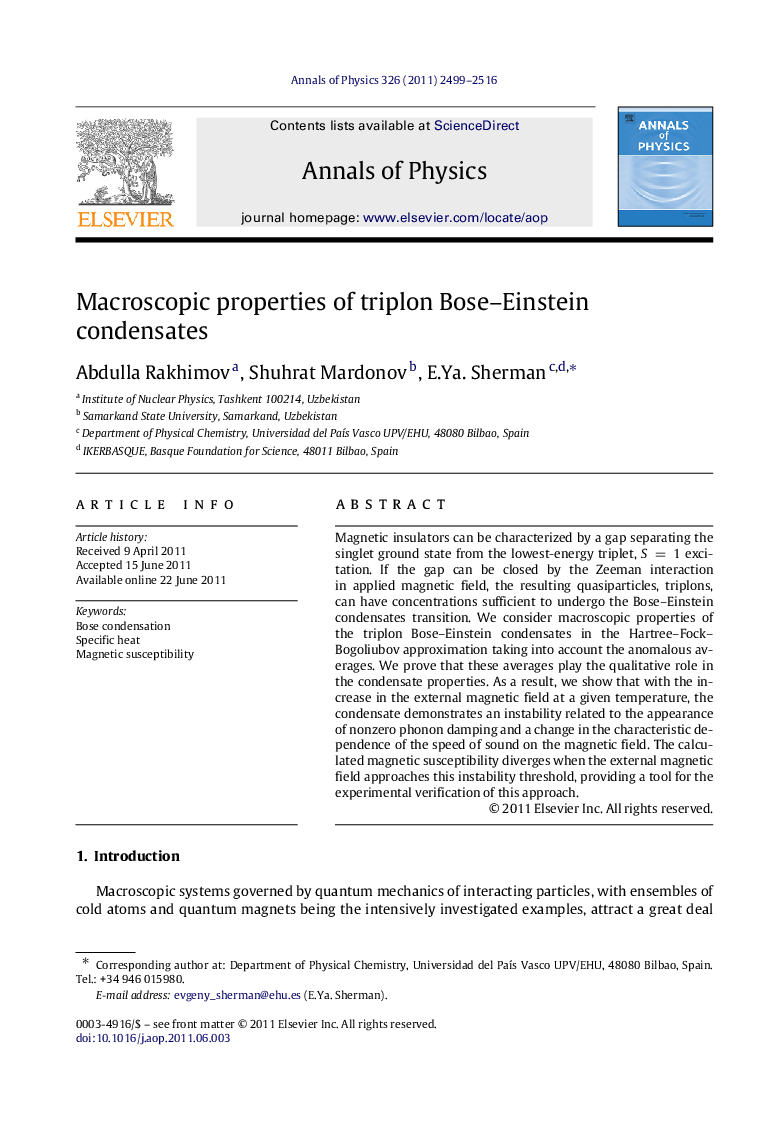| Article ID | Journal | Published Year | Pages | File Type |
|---|---|---|---|---|
| 1857490 | Annals of Physics | 2011 | 18 Pages |
Magnetic insulators can be characterized by a gap separating the singlet ground state from the lowest-energy triplet, S=1S=1 excitation. If the gap can be closed by the Zeeman interaction in applied magnetic field, the resulting quasiparticles, triplons, can have concentrations sufficient to undergo the Bose–Einstein condensates transition. We consider macroscopic properties of the triplon Bose–Einstein condensates in the Hartree–Fock–Bogoliubov approximation taking into account the anomalous averages. We prove that these averages play the qualitative role in the condensate properties. As a result, we show that with the increase in the external magnetic field at a given temperature, the condensate demonstrates an instability related to the appearance of nonzero phonon damping and a change in the characteristic dependence of the speed of sound on the magnetic field. The calculated magnetic susceptibility diverges when the external magnetic field approaches this instability threshold, providing a tool for the experimental verification of this approach.
► A consistent theory of the triplon BEC should consider the anomalous density terms. ► These terms strongly modify the macroscopic properties of the BEC. ► They lead to the instability of the BEC in strong enough magnetic fields. ► The instability can be observed in neutron scattering and magnetization experiments.
